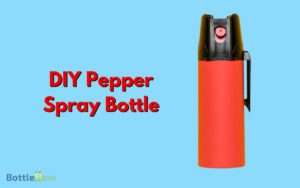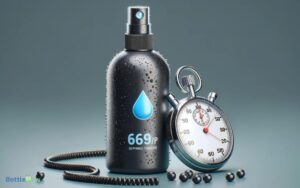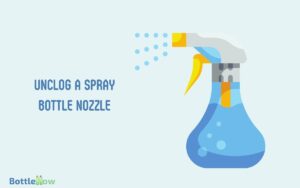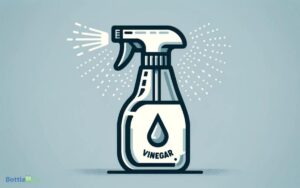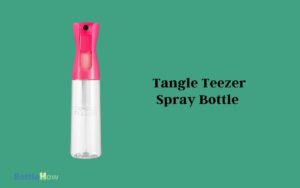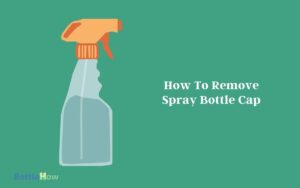Can You Put Sunscreen in a Spray Bottle? Yes!
Yes, you can put sunscreen in a spray bottle, but it’s essential to choose the right one to guarantee the sunscreen functions effectively.
Select a bottle that’s compatible with the sunscreen formulation to prevent chemical breakdown, and make sure the nozzle design offers uniform application to maintain proper coverage.
Additionally, you should carefully transfer the sunscreen to the spray bottle to avoid contamination and ensure an even consistency.
Remember, improper handling can impact the sunscreen’s efficacy and coverage quality. Exploring more on these aspects will equip you with the best practices for using spray sunscreen effectively.
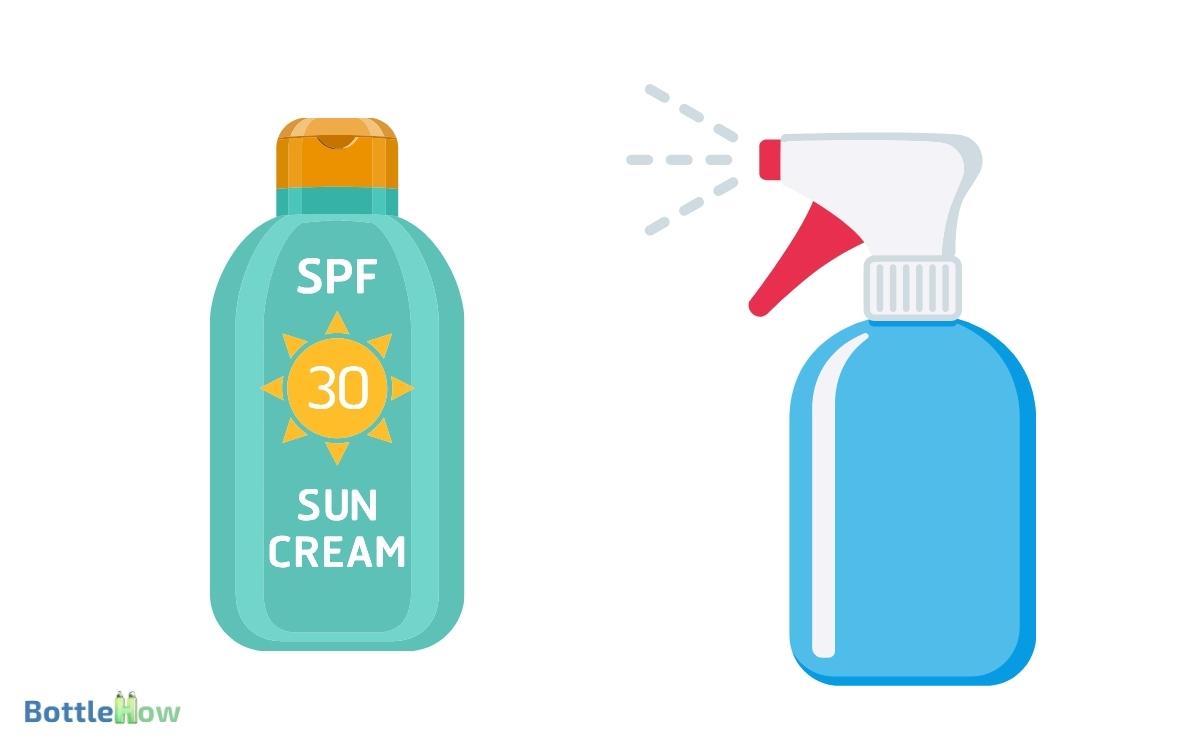
Key Takeaways
Understanding Sunscreen Formulations
Sunscreen formulations, whether in sprays, lotions, or creams, contain active ingredients that protect your skin by absorbing, reflecting, or scattering harmful UV rays.
These ingredients, primarily classified as either chemical or physical blockers, have distinct mechanisms of action.
Chemical sunscreens, containing compounds like oxybenzone and avobenzone, absorb UV radiation through their chemical bonds, converting it into less harmful energy like heat.
On the other hand, physical sunscreens use minerals such as titanium dioxide and zinc oxide to physically block and reflect sunlight away from the skin.
It’s essential you understand these differences to choose the most suitable protection for your skin type and environmental exposure, ensuring you’re effectively shielding those you care for from potential skin damage.
Benefits of Spray Sunscreens
Spray sunscreens offer a convenient application method, ensuring even coverage and easy access to hard-to-reach areas like your back.
They’re especially ideal when you’re applying sunscreen on children or others, as the quick spray can cover large areas efficiently without the need for prolonged rubbing.
Additionally, sprays are less likely to leave a greasy residue, making them a preferred choice for those with oily skin or for use during active sports.
| Feature | Benefit | Ideal For |
|---|---|---|
| Quick Application | Reduces time spent applying sunscreen | Busy individuals, young children |
| Even Coverage | Minimizes missed spots and uneven protection | All skin types, especially uneven surfaces |
| Non-greasy Formula | Prevents excessive oiliness and shine | Oily skin, humid climates |
| Portability | Easy to carry and reapply as needed | Travelers, outdoor enthusiasts |
Using spray sunscreens can greatly enhance your sun protection routine by combining convenience with effective skin care.
Potential Issues With DIY Sprays
When you attempt to create your own sunscreen sprays, you might face several challenges.
Initially, achieving even SPF distribution can be problematic, which is vital for effective sun protection.
Additionally, homemade mixtures may lead to clogged spray mechanisms and raise concerns about the chemical stability of the product.
Inconsistent SPF Distribution
Creating your own sunscreen spray can lead to uneven SPF protection due to inconsistent ingredient distribution. When you mix sunscreen to pour into a spray bottle, the active ingredients that provide sun protection can clump or separate.
This means that some sprays might deliver much less SPF than needed, while others could apply too much, wasting your product.
It’s essential to understand that sunscreen formulations are carefully designed to maintain a uniform distribution of these protective components. When altered, you can’t be sure that the applied layer will shield your skin effectively everywhere.
You’re aiming to help others stay safe in the sun, and unfortunately, DIY sprays mightn’t be the most reliable method to achieve this.
Clogged Spray Mechanism
Another common issue you might encounter with DIY sunscreen sprays is a clogged mechanism, which can interrupt the spray’s uniformity and effectiveness.
When sunscreen ingredients, especially physical blockers like zinc oxide or titanium dioxide, aren’t fully dissolved or finely milled, they can aggregate and block the nozzle.
This not only stops the product from being dispensed evenly but also affects the amount of protection you’re applying to your skin.
To guarantee this, make sure that the sunscreen is thoroughly shaken before each use to keep the particles suspended. Additionally, regularly cleaning the nozzle can help maintain a clear path for the spray.
If you’re consistently facing this problem, consider switching to a different type of bottle or a finer spray mechanism.
Chemical Stability Concerns
You should also consider the chemical stability of your sunscreen ingredients when making DIY sprays, as improper combinations can degrade their effectiveness.
Here’s what you need to watch out for:
- pH Imbalance: Many sunscreen agents are sensitive to pH changes. Mixing with substances that alter the pH can reduce sunscreen efficacy.
- Reactive Ingredients: Some components may react chemically, leading to decomposition of active ingredients.
- Oxidation: Exposure to air in a DIY spray setup can lead to oxidation, which compromises sunscreen’s protective qualities.
- Heat Sensitivity: If stored in hot conditions, the chemical structure of the sunscreen might alter, diminishing its effectiveness.
Understanding these concerns helps guarantee that the sunscreen maintains its intended protective properties.
Choosing the Right Spray Bottle
When selecting a spray bottle for your sunscreen, it’s important to take into account the compatibility of the material with the product’s ingredients.
The design of the nozzle affects the application quality and coverage, so you’ll want to choose one that offers a fine, even mist.
Additionally, the size of the bottle should suit your typical usage and portability needs, ensuring it’s convenient to carry and use.
Selecting Material Compatibility
Choosing a spray bottle that’s compatible with sunscreen ingredients guarantees the product’s efficacy and longevity. Certain oils and chemicals can degrade plastics over time, affecting the bottle’s functionality and the sunscreen’s stability. For example, using olive oil in a spray bottle made from incompatible materials may cause clogging or lead to leaks. Selecting a high-quality, durable container ensures that both the sunscreen and its applicator remain effective.
When selecting a bottle, it’s crucial to take into account the material’s resistance to the chemical components of sunscreen. Not all plastics are created equal, and some may degrade or react with sunscreen formulations.
Here are key factors to take into account:
- Chemical Resistance: Opt for materials like HDPE or PET, which resist corrosion from oily and alcoholic substances in sunscreens.
- UV Protection: Choose materials that block or absorb UV radiation to prevent degradation of sunscreen ingredients.
- Durability: Ensure the bottle can withstand frequent use and exposure to elements like sand and water.
- Product Compatibility: Verify that the bottle material doesn’t react with any specific ingredients in your sunscreen.
Nozzle Design Considerations
After taking into account the material of the spray bottle, it’s important to examine the design of the nozzle to guarantee an even and effective application of sunscreen. You’ll want a nozzle that produces a fine, consistent mist rather than a stream.
This guarantees the sunscreen covers the skin uniformly without leaving heavy spots that can lead to uneven protection.
Look for nozzles with adjustable settings allowing you to control the spray pattern according to your needs. A nozzle that clogs easily can become frustrating and waste product. Opt for nozzles that are specifically designed to handle viscous liquids like sunscreen.
These considerations will help ensure that you’re not only protecting your skin effectively but also maximizing the efficiency and lifespan of your spray bottle.
Bottle Size Options
You’ll need to take into account the size of the spray bottle to make sure it’s important for both everyday use and travel. Choosing the right size is vital for effective application and convenience.
Here are some options to think about:
- Pocket-Size (30-50 ml): Ideal for short trips or as a carry-on during flights. Fits easily in purses or backpacks.
- Medium (100-200 ml): Great for individual use, can comfortably fit in a beach bag or a car’s cup holder.
- Large (200-300 ml): Suitable for families or groups, ensuring everyone has enough sunscreen for prolonged outdoor activities.
- Adjustable Size Bottles: Feature detachable sections to customize capacity as needed, enhancing versatility for various needs.
Choose wisely based on your typical sunscreen usage and travel habits.
How to Properly Transfer Sunscreen
To guarantee maximum effectiveness and uniform application, carefully pour the sunscreen into a clean spray bottle, using a funnel to prevent spills. It’s essential to make sure that your sunscreen maintains its protective qualities during this process.
Stir the sunscreen gently before transferring to promote even consistency, which helps in preventing any clogging of the spray nozzle.
| Step | Tool | Tip |
|---|---|---|
| 1. Stir | Small spatula | Ensure uniform consistency |
| 2. Pour | Funnel | Avoid spills and waste |
| 3. Secure | Spray top | Test for tightness |
Always clean your tools before use to avoid contamination. This careful approach not only preserves the sunscreen’s efficacy but also extends its shelf life, ensuring you’re providing the best care with every application.
Testing Spray Effectiveness
Before using your newly filled spray bottle, it’s important to test its effectiveness to guarantee a consistent and functional spray of sunscreen.
Here’s how you can make sure that your sunscreen application is at its best:
- Check Spray Pattern: Aim the nozzle at a white surface and spray. Look for a uniform and consistent pattern.
- Measure Output: Spray into a measuring spoon for 10 seconds. The volume should match the expected output rate.
- Test Nozzle Function: Make sure the nozzle doesn’t clog or stick during operation.
- Assess Coverage Area: Spray on a large paper to see how wide the sunscreen disperses.
These steps help you provide the best protection with a well-functioning spray bottle, ensuring that you serve others with a reliable tool.
Safety Concerns and Risks
While many enjoy the convenience of spray sunscreens, it’s important to be mindful of their potential risks and safety concerns. Inhaling the aerosolized particles can be harmful; these particles may contain ingredients that aren’t safe for your lungs.
Additionally, it’s challenging to guarantee even coverage, which can lead to sunburn in areas that are missed.
There’s also the risk of the sunscreen spraying into your eyes, causing irritation or discomfort. When applying, make sure you’re in a well-ventilated area to minimize inhalation risks, and avoid direct application to the face.
Instead, spray it onto your hands and then apply it to your face. This method helps protect your health while ensuring you still benefit from the sunscreen.
Maintaining UV Protection Levels
Maintaining your sunscreen’s effective UV protection involves applying a sufficient amount, typically a generous layer, every two hours or immediately after swimming or sweating.
Keeping the intended level of protection with spray sunscreen also requires attention to how evenly it’s applied.
Here are key considerations:
- Consistent Coverage: Make sure the spray provides uniform coverage without missing spots.
- Direct Application: Spray directly onto your skin rather than into the air to minimize loss.
- Rubbing it in: After spraying, lightly rub the sunscreen to distribute it evenly.
- Reapplication: Diligently reapply after excessive sweating or water exposure to maintain protection levels.
Adhering to these guidelines helps guarantee that your skin remains well-protected under the sun.
Alternative Sun Protection Methods
Aside from sunscreen, wearing protective clothing and seeking shade are effective ways to shield your skin from harmful UV rays. Opt for garments with UV protection factor (UPF) labels, which indicate how effectively fabrics block UV radiation.
A UPF rating of 50, for instance, means that only 1/50th of the sun’s UV rays can penetrate the cloth, providing substantial protection.
Additionally, wide-brimmed hats and UV-blocking sunglasses help protect your face and eyes, reducing your risk of cataracts and skin cancer around the sensitive eyelid area. Whenever possible, stay under cover during peak sun hours between 10 a.m. and 4 p.m.
By combining these strategies, you’ll effectively minimize your UV exposure while helping others understand the importance of thorough sun protection.
Conclusion
So, after believing you could outsmart the sunscreen industry by pouring it into any old spray bottle, you’ve probably realized it’s not quite that simple. Ensuring the bottle, application, and effectiveness meet safety standards is quite the science experiment.
Instead of playing chemist with your skin on the line, sticking to professionally formulated sprays might just save your skin—literally. Remember, when it comes to sun protection, sometimes it’s best to leave the innovation to the experts.

